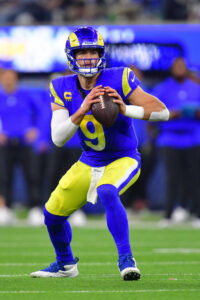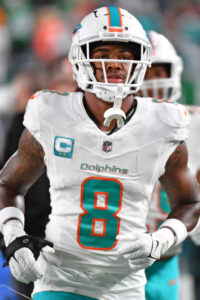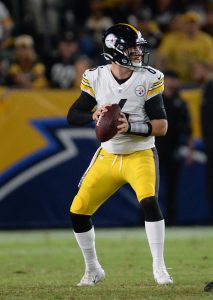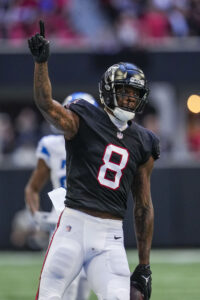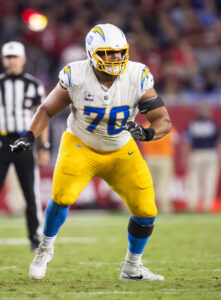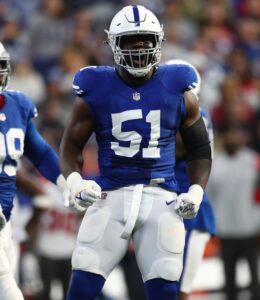With owners delaying Tom Brady‘s approval as a Raiders minority owner for over a year, Mark Davis‘ plan to install the all-time QB great/FOX lead analyst as his top football exec was on hold. This delay brought both good and bad news for the Raiders’ 2024 power structure. Davis removed Antonio Pierce‘s interim tag and arranged a shotgun marriage with ex-Chargers GM Tom Telesco. Brady’s first months in charge, however, led to both being fired and yet another batch of new Raider leaders being brought in.
The Raiders’ latest reboot soon brought a full-on Seattle feel, as new HC Pete Carroll added three-year Seahawks starting quarterback Geno Smith in a trade. As the Raiders attempt to raise their floor with Carroll and Smith, Brady and new GM John Spytek created some long-term questions with their decisions this offseason.
Coaching/Front Office:
We covered in last year’s Raiders Offseason In Review effort how unusual the Pierce promotion was, as the former Super Bowl-winning linebacker’s experience level was unlike just about any modern HC hire’s. That turned out to be an issue for the Raiders, who trudged through a 4-13 season, losing the momentum their Pierce-led 2023 stretch created. Pierce, who drew HC interest from other teams last year, fired his OC hire (Luke Getsy) halfway through the season and could not stave off an ouster himself. No team has hired the former Arizona State DC this offseason.
 Pierce and Telesco did not see eye to eye at quarterback; an eventful (for the wrong reasons) season transpired. Pierce was closely linked to preferring a blockbuster trade-up to reunite with Jayden Daniels, but Telesco was believed to be unready to part with the draft capital that would have been necessary to make that happen. Both power brokers paid the price, and while the Raiders were likely the one team that made the Commanders an offer for No. 2 overall, it never sounded like Washington would have made that trade.
Pierce and Telesco did not see eye to eye at quarterback; an eventful (for the wrong reasons) season transpired. Pierce was closely linked to preferring a blockbuster trade-up to reunite with Jayden Daniels, but Telesco was believed to be unready to part with the draft capital that would have been necessary to make that happen. Both power brokers paid the price, and while the Raiders were likely the one team that made the Commanders an offer for No. 2 overall, it never sounded like Washington would have made that trade.
The Raiders finding themselves shut out after not making any move up the board (from No. 13) created a predictable QB issue. Even as Brock Bowers dominated, Telesco paid for not addressing the QB situation last year.
Not wanting Pierce’s replacement tied to a holdover GM, Brady orchestrated Telesco’s ouster. Davis was not exactly displeased with Telesco’s draft, as it produced a record-setting tight end season and two O-linemen (Jackson Powers-Johnson, DJ Glaze) poised to start this year, but the Christian Wilkins signing — and the deal given to stopgap Gardner Minshew — worked against the longtime AFC West exec. The Raiders fired Telesco less than 13 months after a Pierce-led 63-21 demolition led to Telesco’s Chargers ouster. No team has hired since hired Telesco.
 Connections to Bill Belichick and Deion Sanders emerged, but no real traction came regarding either college coach. Mike Vrabel also turned down a meeting with his former Patriots teammate due to being set on returning to New England. These were not the most notable “what if?” regarding this Raiders coaching search.
Connections to Bill Belichick and Deion Sanders emerged, but no real traction came regarding either college coach. Mike Vrabel also turned down a meeting with his former Patriots teammate due to being set on returning to New England. These were not the most notable “what if?” regarding this Raiders coaching search.
Brady’s presence convinced Ben Johnson to give the Raiders serious consideration, whereas the high-demand candidate was otherwise prepared to pass on an interview. The optics of Brady calling Lions games, including their playoff loss to the Commanders, for FOX and simultaneously eyeing him for the Raiders created an obvious conflict of interest. Brady is not leaving the booth, however, and he used the time to scout Johnson for a Vegas pitch.
While the Raiders prepared a big offer for Johnson, a later report indicated they never actually made it. Johnson ended up backing out of the Raiders and Jaguars’ searches, informing the Bears he would mentor Caleb Williams. The Raiders’ lack of a surefire quarterback option at that time hurt their cause, and Brady and Co. soon completed about as drastic a pivot as possible. They have gone from attempting to hire a 39-year-old to choosing Carroll, who will become the oldest HC in NFL history after turning 74 in September.
Carroll did not advance as far on last year’s HC carousel but rocketed back for what will be his fourth NFL HC opportunity. The former Jets, Patriots and Seahawks leader did not overlap with Brady in Foxborough, being fired as Robert Kraft engineered the 2000 Belichick hire/trade, but faced him with the Seahawks. Carroll said Brady’s part-owner status became a draw for him. While other teams had interviewed Carroll since his Seahawks ouster, it is also fair to say the Super Bowl-winning HC was not an in-demand candidate.
 Few coaches receive fourth chances, separating Carroll from most of his peers. His four AFC East seasons notwithstanding, the veteran leader will obviously be best remembered for his Seattle stay. The ex-USC national champion HC held final personnel say with the Seahawks, and while John Schneider has seen more credit for the team’s draft finds (Kam Chancellor, Richard Sherman, Bobby Wagner, Russell Wilson), Carroll held the hammer.
Few coaches receive fourth chances, separating Carroll from most of his peers. His four AFC East seasons notwithstanding, the veteran leader will obviously be best remembered for his Seattle stay. The ex-USC national champion HC held final personnel say with the Seahawks, and while John Schneider has seen more credit for the team’s draft finds (Kam Chancellor, Richard Sherman, Bobby Wagner, Russell Wilson), Carroll held the hammer.
The Seahawks went 170-120-1 under Carroll. That regular-season win total sits 17th all time; he can move to 14th with a four-win season. The Raiders will expect more, as the defense-oriented coach never posted fewer than seven wins in a season in 14 Seattle years.
Wilson’s prime and the Legion of Boom’s presences raised the Seahawks’ ceiling, and the organization capitalized on the former’s rookie contract to supplement the Sherman, Chancellor and Earl Thomas extensions. That formula produced one of the NFL’s best 21st-century teams, as the 2013 Seahawks demolished the Broncos — who had Spytek on staff at the time — in Super Bowl XLVIII before a banged-up successor fell just short to Brady’s Patriots a year later.
The Seahawks became the first team since the mid-1950s Browns to lead the NFL in scoring defense in four straight seasons, running that streak from 2012-15. But Carroll’s unit gradually declined to the point it became a weakness during the Smith years. The Seahawks ranked 25th in points allowed in 2022 and ’23, and they Ken Norton Jr.– and Clint Hurtt-run units were 26th or worse four times from 2019-23.
While Carroll deserves some credit for providing key input to tailor an offense around Wilson’s skillset, the Seahawks hovered around the .500 mark during the coach’s final three seasons. Carroll lobbied to keep his job in 2024, but ownership disagreed and moved on with Schneider at the controls (and the NFL’s youngest HC — Mike Macdonald — on the sideline).
 Marv Levy and George Halas were both 72 when they coached their final seasons; Romeo Crennel was an interim Texans HC at 73. This season, Carroll will be two years older than any other full-time HC in NFL history. That invites obvious questions about the Raiders’ plan, as it features a shorter coaching contract (three years) compared to standard deals. Kelly and Graham would make unusual successors, and it is fair to wonder if the Raiders have Carroll’s replacement on staff. A rumor indicating Brennan Carroll could be in that mix certainly proved interesting. How the Raiders plan to transition after this short-term Pete Carroll run will be a central storyline for as long as this partnership lasts.
Marv Levy and George Halas were both 72 when they coached their final seasons; Romeo Crennel was an interim Texans HC at 73. This season, Carroll will be two years older than any other full-time HC in NFL history. That invites obvious questions about the Raiders’ plan, as it features a shorter coaching contract (three years) compared to standard deals. Kelly and Graham would make unusual successors, and it is fair to wonder if the Raiders have Carroll’s replacement on staff. A rumor indicating Brennan Carroll could be in that mix certainly proved interesting. How the Raiders plan to transition after this short-term Pete Carroll run will be a central storyline for as long as this partnership lasts.
The third pillar in the Raiders’ power trio carries by far the lowest Q rating, but Spytek has a unique relationship with Brady. The two were teammates at Michigan, more than two decades before Spytek resided in a Buccaneers front office that wooed the QB legend to Tampa. Spytek, 44, moved from national Broncos scout to Bucs player personnel director after Denver’s Super Bowl 50 win. The Bucs assembled pieces that eventually attracted Brady as a free agent, and Spytek was integral to that combination delivering the franchise’s second Super Bowl championship.
The veteran exec also helped the Bucs establish a four-year NFC South title streak — albeit in a rather down period for that division — despite Brady’s retirement creating a $35MM dead money bill in 2023. Tampa Bay still managed to re-sign and extend its key players, producing winning records both with Brady’s dead cap bill on the books (2023) and after Baker Mayfield received a major pay raise (2024).
 Carroll does not hold full personnel control in Vegas; it is unclear who is making the final calls. Brady has described himself as a sounding board — a good nominee for undersell of the year — while Carroll has said he, Spytek and Brady are involved in the decision-making.
Carroll does not hold full personnel control in Vegas; it is unclear who is making the final calls. Brady has described himself as a sounding board — a good nominee for undersell of the year — while Carroll has said he, Spytek and Brady are involved in the decision-making.
Kelly became a borderline reviled presence in Philly by 2015, when his power grab nearly led Howie Roseman out of town. Kelly’s 2016 49ers stop led to the 49ers cleaning house a year later. Both teams became NFC powers after firing Kelly. Still, the former UCLA HC-turned-Ohio State OC received interest in another try. This included Raiders OC interest in 2024, making it interesting they circled back — after another regime change — this year.
The Raiders interviewed Kelly twice in 2024, and it undoubtedly cost more to hire him a year later due to the Buckeyes’ national championship season. Kelly, 61, made the unusual transition from HC to OC at the college level. Ohio State’s ascent to a title — 14 years after Kelly’s Oregon squad fell short to Cam Newton‘s Auburn team — after losing Marvin Harrison Jr. led to interest from a few teams.
The Raiders’ $6MM salary — believed to be the highest for an active coordinator — brought in Kelly, as Brady and his ownership group partners are helping deliver funding into a traditionally cash-poor franchise.
 Graham, 46, has been on the HC carousel for a bit. This year did not produce as much attention, even with the Jaguars having Graham as an option behind top choice Liam Coen. The Jags and Bengals, though, did consider Graham for DC. This came after a Graham-led bounce-back gave the Raiders their first top-16 scoring defense (ninth) since the Super Bowl XXXVII year.
Graham, 46, has been on the HC carousel for a bit. This year did not produce as much attention, even with the Jaguars having Graham as an option behind top choice Liam Coen. The Jags and Bengals, though, did consider Graham for DC. This came after a Graham-led bounce-back gave the Raiders their first top-16 scoring defense (ninth) since the Super Bowl XXXVII year.
Dating back to Al Davis‘ final decade in charge, the Raiders have been unable to rely on their defenses. This included last year, when Graham’s unit regressed to 25th in points allowed. Graham has no history with Carroll, but he was on the Patriots’ staff during seven Brady years.
Signaling their latest fresh start, the Raiders rehired both Olson and Woods. Olson had been the Silver and Black’s OC for six seasons across a two-stint stretch (from 2013-14 and again from 2018-21). Olson took over after Raiders play-calling after Jon Gruden‘s forced resignation. The Raiders’ DBs coach in 2014, Woods joined Spytek in collecting a ring with the 2015 Broncos — before three DC opportunities (in Denver, Cleveland and New Orleans) followed.
Trades:
One of many teams to enter the offseason with a QB need, the Raiders passed on free agency and a lowly regarded draft class at the position. While Las Vegas was linked to both a Wilson-Carroll reunion and being in on Sam Darnold and Justin Fields, the team made a preemptive strike.
 As it turned out, Brady did not want the Raiders to bring in Darnold. But they joined the Giants in making a strong push for Matthew Stafford. Both teams had agreed to provide the aging signal-caller with a sizable guarantee package — from $90-$100MM. (The Raiders, however, were not going to trade their No. 6 overall pick even as the Rams sought a first-rounder for their centerpiece player.) Brady and Stafford met at a ski resort in Montana, after the Rams had given their starter permission to discuss trades, as Davis’ new ownership weapon appeared to give the team a boost in QB recruitment.
As it turned out, Brady did not want the Raiders to bring in Darnold. But they joined the Giants in making a strong push for Matthew Stafford. Both teams had agreed to provide the aging signal-caller with a sizable guarantee package — from $90-$100MM. (The Raiders, however, were not going to trade their No. 6 overall pick even as the Rams sought a first-rounder for their centerpiece player.) Brady and Stafford met at a ski resort in Montana, after the Rams had given their starter permission to discuss trades, as Davis’ new ownership weapon appeared to give the team a boost in QB recruitment.
Reminding of Brady’s Ben Johnson pursuit, the mission brought intrigue from the courtship’s object but ultimately failed when Stafford — as could be expected given his importance to the Rams and fit with Sean McVay — regrouped and stayed in L.A. Stafford heading from the friendly confines McVay has created in L.A. for Vegas uncertainty at 37 would have been a big gamble.
Smith’s value had sunk so low the Seahawks had cut him while they rearranged their roster in August 2019. That began a three-year stint as Wilson’s backup, but when Carroll signed off on the March 2022 Wilson blockbuster trade, Smith beat out Drew Lock for the ’22 Seattle gig.
 Smith’s stunning turnaround captured attention and brought a substantial raise. But the Seahawks paused on committing true franchise money to their Wilson replacement. That pattern persisting in 2024 and into this offseason opened the door for the Raiders, who obtained Smith for a modest trade price.
Smith’s stunning turnaround captured attention and brought a substantial raise. But the Seahawks paused on committing true franchise money to their Wilson replacement. That pattern persisting in 2024 and into this offseason opened the door for the Raiders, who obtained Smith for a modest trade price.
They also acquired the QB’s Seahawks-designed three-year, $75MM contract. Agreed to in Carroll’s final Seattle offseason, the deal’s true numbers had placed Smith in no-man’s land at the position. Hovering a couple tiers south of the new franchise-QB market and well above backup money, Smith had pursued a Seahawks extension in 2024. Talks about a deal this year led to the trade, as the Seahawks and Smith’s camp did not see eye-to-eye on value.
The outcome of the Raiders’ subsequent Smith negotiations proved interesting, as the 13th-year passer’s AAV sits 17th at the position. Smith did pass Derek Carr‘s Saints contract — still active at the time the Raiders extended Smith — and Baker Mayfield‘s midlevel Buccaneers accord, but he did not clear the $40MM-per-year bar he hoped to in Seahawks talks. The NFC West team had proposed Smith numbers similar to the Darnold contract (three years, $100.5MM); he declined. Darnold’s deal carries a year-to-year structure; the team offering that to Smith illustrates hesitancy despite a solid three-year starter tenure.
Read more
 Smith collected far more fully guaranteed money from Vegas than he did on his 2023 Seattle raise ($27.3MM), but the Raiders contract would bring no dead money if the team moved on in 2027. This deal gives the team a safety net while another long-term QB search commences.
Smith collected far more fully guaranteed money from Vegas than he did on his 2023 Seattle raise ($27.3MM), but the Raiders contract would bring no dead money if the team moved on in 2027. This deal gives the team a safety net while another long-term QB search commences.
Considering Smith will be 37 in 2027, the Raiders have a runway to find his replacement. For now, though, the ex-Jets draftee brings five years of Carroll familiarity and a substantial upgrade on what the Raiders had deployed since they cut Carr.
Although Smith’s interception issues (15) plagued the Seahawks last year, he played behind a below-average offensive line and for an OC (Ryan Grubb) Macdonald fired after one season. Seattle being fine replacing Smith with Darnold does not paint a picture of tremendous confidence in the discarded QB, but Smith topped his Comeback Player of the Year numbers in 2024 in completion percentage (70.4) and yardage (4,320). A 21st-place QBR finish accompanied those marks, and Smith will also go from targeting D.K. Metcalf, Tyler Lockett and Jaxon Smith-Njigba to throwing passes to Bowers and a receiving corps appearing to possess far less firepower.
Extensions and restructures:
The Seahawks asked the Raiders for Crosby in a trade that would have sent both Smith and Metcalf to Vegas; the Silver and Black predictably balked. For a second time, a Raiders regime that did not draft the former fourth-rounder paid him. This deal came with two seasons remaining on the four-year, $94MM extension Crosby signed early in the Josh McDaniels-Dave Ziegler tenure. Telesco signed off on a reworking for the All-Pro pass rusher last year; the Spytek-Brady-Carroll troika bettered that to display a firm commitment to a player who had been in trade rumors.
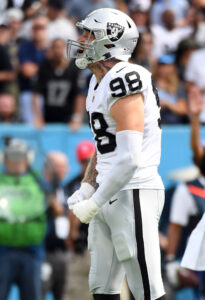 Teams asked about Crosby at the past two deadlines, as the Raiders’ fortunes had worsened since the fluky Rich Bisaccia-overseen playoff campaign. Mark Davis shut down inquiries, but Crosby looked to have changed his stance on being a one-team player, making comments about a lack of desire to be part of another rebuild last year. The Raiders responded by making the impact EDGE (briefly) the NFL’s highest-paid defender at $35.5MM per year. That passed Nick Bosa‘s pact and set the table for Myles Garrett‘s $40MM-AAV extension.
Teams asked about Crosby at the past two deadlines, as the Raiders’ fortunes had worsened since the fluky Rich Bisaccia-overseen playoff campaign. Mark Davis shut down inquiries, but Crosby looked to have changed his stance on being a one-team player, making comments about a lack of desire to be part of another rebuild last year. The Raiders responded by making the impact EDGE (briefly) the NFL’s highest-paid defender at $35.5MM per year. That passed Nick Bosa‘s pact and set the table for Myles Garrett‘s $40MM-AAV extension.
Crosby, 28 in August, has stood as the team’s franchise player for years. He kept producing elite disruption numbers despite the Raiders’ plans to complement him fizzling. McDaniels and Ziegler’s Chandler Jones reunion combusted quickly, after the former All-Pro had delivered an uninspired 2022 season, and complementary piece Tyree Wilson has made four starts in two seasons. Telesco’s top investment, Christian Wilkins, went down with a foot fracture five games into last season. That occurred barely a month after Malcolm Koonce‘s ACL tear.
Crosby’s 62 tackles for loss since 2022 lead the NFL by five. That is 16 more than T.J. Watt and 19 more than Micah Parsons in that span. Both Watt and Parsons have much more help, whereas Crosby has racked up these numbers as a one-man show of sorts for mostly struggling teams. He also compiled them after missing five games to close last season.
Free agency additions:
- Jeremy Chinn, S. Two years, $16.26MM ($12.25MM guaranteed)
- Alex Cappa, G. Two years, $11.02MM ($5.5MM guaranteed)
- Germaine Pratt, LB. One year, $4.26MM ($3.75MM guaranteed)
- Eric Stokes, CB. One year, $3.5MM ($2.99MM guaranteed)
- Elandon Roberts, LB. One year, $3.01MM ($2.5MM guaranteed)
- Leki Fotu, DL. One year, $1.42MM ($568K guaranteed)
- Lonnie Johnson Jr., S. One year, $1.69MM ($175K guaranteed)
- Raheem Mostert, RB. One year, $1.6MM ($175K guaranteed)
- Jaylon Smith, LB. One year, $1.26MM
- Collin Johnson, WR. One year, $1.17MM
- Devin White, LB. One year, $1.17MM
 Chinn’s deal represents the only notable contract the Raiders gave out in free agency. Just missing the cut for PFR’s top 50 free agents, Chinn fared much better than he did coming off a down Panthers contract year. The former Defensive Rookie of the Year runner-up helped the Commanders to a stunning NFC championship game berth. After playing for $4.1MM in 2024, Chinn — a player the Eagles strongly considered taking over Jalen Hurts in 2020 — boosted his value.
Chinn’s deal represents the only notable contract the Raiders gave out in free agency. Just missing the cut for PFR’s top 50 free agents, Chinn fared much better than he did coming off a down Panthers contract year. The former Defensive Rookie of the Year runner-up helped the Commanders to a stunning NFC championship game berth. After playing for $4.1MM in 2024, Chinn — a player the Eagles strongly considered taking over Jalen Hurts in 2020 — boosted his value.
More ‘tweener than deep coverage presence, Chinn gives DCs options. The ex-Carolina second-rounder played extensively at safety and linebacker as a pro. Last season, he logged 412 snaps in the box, 299 at free safety and 202 in the slot. Chinn delivered a predictably versatile season, notching 117 tackles (a career-high seven for loss) to go with two sacks, two fumble recoveries and five pass deflections. He also mixed in a forced fumble and an interception.
Stokes operated as a first-stringer during the Raiders’ offseason program, a development that both highlights the cornerback’s ability when healthy and perhaps a thin Raiders CB group. Running a sub-4.3-second 40-yard dash coming out of Georgia, Stokes did not realize his potential as a Packer. Foot trouble felled Stokes midway through 2022, and the former first-rounder attributed his 2023 hamstring issues to overcompensating. Stokes, 26, returned to play 17 games (seven starts) for last season’s Packers.
 Cappa, 30, started 31 regular-season Bucs games during Brady’s tenure and overlapped with Spytek throughout his Tampa stay. Cappa missed Super Bowl LV due to injury, but the Bengals liked the former third-rounder’s form enough to make him part of a 2022 O-line overhaul.
Cappa, 30, started 31 regular-season Bucs games during Brady’s tenure and overlapped with Spytek throughout his Tampa stay. Cappa missed Super Bowl LV due to injury, but the Bengals liked the former third-rounder’s form enough to make him part of a 2022 O-line overhaul.
Cappa did not miss a game due to injury in Cincinnati but is coming off a down year and release. Out of 77 guard regulars in 2024, Pro Football Focus graded Cappa 71st. The Raiders will still turn to the 96-start player, who looks to have locked down a starting job as Jordan Meredith and Dylan Parham battle for the other guard gig.
A three-year Cappa Cincy teammate, Pratt became a late cap casualty. The Bengals used Pratt on a career-best 1,078 defensive snaps last season, but the Lou Anarumo-era player did not check enough boxes for Al Golden. Pratt, 29, joined a team in need at the position. PFF rated Pratt as a top-20 off-ball LB in 2022 but slotted him outside the top 50 in 2023 and ’24.
 Starting over at linebacker, the Raiders are set to have two retreads manning starting posts. This is team No. 4 for Roberts, a Brady teammate in New England. The two-time Super Bowl winner also played under Graham in Miami, providing considerable familiarity for the Raiders. Roberts, 31, started 29 games for the Steelers over the past two years. He has 105 for his career; Pratt brings 88 to Vegas. Both players profile as short-term fixes for the Raiders, with White — whose value has nosedived over the past two years — continuing the run on ex-Brady teammates heading to Vegas.
Starting over at linebacker, the Raiders are set to have two retreads manning starting posts. This is team No. 4 for Roberts, a Brady teammate in New England. The two-time Super Bowl winner also played under Graham in Miami, providing considerable familiarity for the Raiders. Roberts, 31, started 29 games for the Steelers over the past two years. He has 105 for his career; Pratt brings 88 to Vegas. Both players profile as short-term fixes for the Raiders, with White — whose value has nosedived over the past two years — continuing the run on ex-Brady teammates heading to Vegas.
Mostert also finds himself a stopgap, signing with the Raiders weeks before their Ashton Jeanty decision. The rare 33-year-old running back, Mostert is still active because the NFL deemed him a special-teamer during a nomadic first four years. Two seasons removed from leading the NFL in touchdowns (21), Mostert saw De’Von Achane usurp him in Miami last season.
The speedy RB also rejoins Kelly 10 years after the then-Eagles HC/temporary personnel czar added him as a UDFA. The former 49ers starter will complement Jeanty, and with only 752 carries on his resume (854 fewer than Josh Jacobs), Mostert should still have juice left.
Re-signings:
 Effectively delivering only a half-season of notable production on his rookie contract, Koonce did well to parlay that potential into an eight-figure guarantee. The former third-round pick combined for two sacks over his first two seasons, playing behind Jones and Yannick Ngakoue in that time. Jones’ 2023 antics and Tyree Wilson not being ready opened a door, and Koonce capitalized. Pierce’s interim HC stretch featured all eight of Koonce’s 2023 sacks; this included a five-sack spurt over wins against the Chargers and Chiefs.
Effectively delivering only a half-season of notable production on his rookie contract, Koonce did well to parlay that potential into an eight-figure guarantee. The former third-round pick combined for two sacks over his first two seasons, playing behind Jones and Yannick Ngakoue in that time. Jones’ 2023 antics and Tyree Wilson not being ready opened a door, and Koonce capitalized. Pierce’s interim HC stretch featured all eight of Koonce’s 2023 sacks; this included a five-sack spurt over wins against the Chargers and Chiefs.
Koonce was unable to build on this due to an ACL tear occurring in practice days before the season. That capped the Buffalo alum’s value, allowing the Raiders to afford his “prove it” year.
Butler has quietly excelled as a Raider. Last season’s Wilkins injury opened more playing time, and the former Patriots and Dolphins cog took advantage. Playing on a one-year, $1.8MM deal, Butler was among only four D-tackles to finish in the top 20 in pass rush win rate while also ranking in the top 10 in run stop win rate. Butler tallied five sacks for the second straight season and posted a career-high 10 QB hits last year, aiding a depleted Raiders front.
Butler joins Roberts, Cappa, White and Jakobi Meyers in being a Brady teammate (in New England from 2017-19). Even as the Raiders had attempted to transition from Patriot Way mantra that failed under McDaniels, they are back in that place due to Brady’s presence.
Notable losses:
- Ameer Abdullah, RB
- Harrison Bryant, TE
- Amari Burney, LB
- Matthew Butler, DL (waived)
- K’Lavon Chaisson, OLB
- Divine Deablo, LB
- Marcus Epps, S
- Nate Hobbs, CB
- Andre James, C (released)
- John Jenkins, DL
- Jack Jones, CB (waived)
- Terrace Marshall, WR
- Luke Masterson, LB
- Alexander Mattison, RB
- Gardner Minshew, QB (post-June 1 cut)
- Tre’von Moehrig, S
- Andrus Peat, T
- Desmond Ridder, QB (nontendered)
- Janarius Robinson, OLB
- Robert Spillane, LB
- DJ Turner, WR (nontendered)
- Cody Whitehair, G
 Carroll spoke of interest in keeping Koonce, Hobbs, Moehrig and Spillane; only Koonce came back. As Vegas added Stokes from Green Bay, the Packers poached Hobbs on a four-year, $48MM deal. Spillane also collected eight figures per year, signing a three-year deal worth $33MM with the Patriots. Moehrig fared the best here by scoring a three-year, $51MM Panthers deal that topped all safeties on this year’s market.
Carroll spoke of interest in keeping Koonce, Hobbs, Moehrig and Spillane; only Koonce came back. As Vegas added Stokes from Green Bay, the Packers poached Hobbs on a four-year, $48MM deal. Spillane also collected eight figures per year, signing a three-year deal worth $33MM with the Patriots. Moehrig fared the best here by scoring a three-year, $51MM Panthers deal that topped all safeties on this year’s market.
Hobbs joined Crosby in being a Day 3 Gruden-era find, mostly manning the slot in Vegas. As some CB investments did not pan out, Hobbs had worked as the team’s top corner for most of his rookie contract. The Raiders rebuffed trade interest in the former fourth-rounder, but even as Carroll retained Graham, they cut costs at corner.
Moehrig’s market soared, surprisingly surpassing Jevon Holland‘s endpoint, after the former third-rounder ranked in the top 15 among safeties in terms of INTs and forced incompletion rate (per PFF) over the past two seasons. Epps’ season-ending injury allowed Moehrig to make more plays near the line of scrimmage, but the Raiders replaced him with Chinn at a lower rate.
Spillane and Deablo’s departures have the Raiders rebooting at linebacker. Spillane went from not making it out of a PFR “Minor NFL Transactions” post (granted, on a busy day) in March 2023 to commanding a $20.6MM Patriots guarantee. The Raiders’ green-dot player played at least 97% of the Raiders’ defensive snaps in both of his two Vegas seasons, combining for five INTs, 5.5 sacks and 11 passes defensed. PFF viewed Spillane as a far better run defender than coverage player, however.
 A converted safety, Deablo started 42 Raiders games on his rookie deal. The Falcons gave the Gruden/Mike Mayock third-rounder a two-year, $14MM deal. Even that dwarfs what the Raiders now have allocated to their LB troops.
A converted safety, Deablo started 42 Raiders games on his rookie deal. The Falcons gave the Gruden/Mike Mayock third-rounder a two-year, $14MM deal. Even that dwarfs what the Raiders now have allocated to their LB troops.
James had spent the past four seasons as the Raiders’ center starter. His release will pave the way for Powers-Johnson, the 2023 Rimington award winner. The Raiders had shifted the Bo Nix college blocker to guard as a rookie, but he is set to snap to Smith this season. This cut marked a quick change for the Raiders, who gave the Gruden-era pickup a three-year, $24MM deal under Telesco last March. James is now a Charger on a vet-minimum deal.
Illustrating how bleak the Raiders’ QB situation had become since Carr’s December 2022 benching, their Week 1 starters in 2023 and ’24 received post-June 1 cut designations the following year. Pierce surely worried being stuck with Minshew, who had signed a two-year deal worth $25MM, would weaken his job security. The overmatched HC continued to bench Minshew and then reinstall him in the lineup, as the former sixth-round find endured his worst season.
Minshew posted a 9-10 TD:INT ratio and experienced his worst yards-per-attempt number (6.6) of his career, following Jimmy Garoppolo out the door. Like Garoppolo, Minshew landed as a low-cost backup (with the Chiefs) after his Raiders release.
Draft:
- Round 1, No. 6: Ashton Jeanty (RB, Boise State) (signed)
- Round 2, No. 58 (from Texans): Jack Bech (WR, TCU)
- Round 3, No. 68: Darien Porter (CB, Iowa State) (signed)
- Round 3, No. 98 (from Dolphins)*: Caleb Rogers (G, Texas Tech) (signed)
- Round 3, No. 99 (from Giants through Texans)*: Charles Grant (T, William & Mary) (signed)
- Round 4, No. 108: Dont’e Thornton (WR, Tennessee) (signed)
- Round 4, No. 135 (from Dolphins)*: Tonka Hemingway ((DT, South Carolina) (signed)
- Round 6, No. 180: J.J. Pegues (DT, Ole Miss) (signed)
- Round 6, No. 213*: Tommy Mellott (QB, Montana State) (signed)
- Round 6, No. 215*: Cam Miller (QB, North Dakota State) (signed)
- Round 7, No. 222: Cody Lindenberg (LB, Minnesota) (signed)
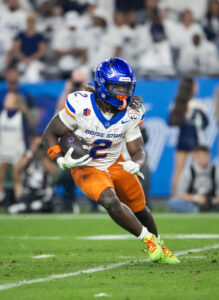 Although the Raiders once again were connected to a potential trade-up for a quarterback, taking care of that need with Smith moved that off the front burner — even if the team hosted Jaxson Dart and Shedeur Sanders on visits (QB visits have been quite common for the Raiders post-Carr).
Although the Raiders once again were connected to a potential trade-up for a quarterback, taking care of that need with Smith moved that off the front burner — even if the team hosted Jaxson Dart and Shedeur Sanders on visits (QB visits have been quite common for the Raiders post-Carr).
The Jaguars climbing from No. 5 to No. 2 cleared a path to Jeanty, after Jacksonville-Jeanty buzz circulated (in what turned out to be a smokescreen), and the Raiders pounced after the Browns passed. Coming off one of the most dominant seasons at any position in college football history, Jeanty will arrive as a belated Josh Jacobs replacement — after the low-cost Alexander Mattison move did not work.
Travis Hunter narrowly edged Jeanty for the 2024 Heisman, but the latter certainly had the best season at one position in Division I-FBS. Jeanty made a legitimate push at Barry Sanders‘ hallowed FBS rushing record, finishing with 2,601 yards. Yes, Jeanty did this in 14 games compared to Sanders’ 11 (YouTube some 1988 Oklahoma State highlights; they’re good), but he established himself as the clear RB1 in a deep class at the position. While Jeanty did most of his damage on the ground during his Heisman runner-up season, he showed plus receiving skills as a sophomore by totaling 569 yards through the air.
 Jeanty accumulated 830 touches at Boise State but will not turn 22 until December. The college workload should not be a major concern for the Raiders, who can keep him on his rookie deal until 2029 via the fifth-year option. Jeanty is a better prospect compared to Jacobs, even as concerns about competition level understandably surfaced. Though, it is not like Boise State towered over the Mountain West; Jeanty ran behind a mid-major O-line while eluding defenders on this level.
Jeanty accumulated 830 touches at Boise State but will not turn 22 until December. The college workload should not be a major concern for the Raiders, who can keep him on his rookie deal until 2029 via the fifth-year option. Jeanty is a better prospect compared to Jacobs, even as concerns about competition level understandably surfaced. Though, it is not like Boise State towered over the Mountain West; Jeanty ran behind a mid-major O-line while eluding defenders on this level.
Linked to Cooper Kupp and Tyler Lockett, the Raiders stood down at receiver in free agency. They are counting on this rookie class to supplement Meyers, who is in a contract year. Vegas had Thornton playing over Bech at minicamp, representing an interesting development due to their respective draft positions.
NFL.com’s Daniel Jeremiah did not have Thornton in his top 150; he rated Bech 52nd. Thornton, though, reminds a bit of Carroll draftee Riq Woolen in running a 4.30-second 40 time with a 6-foot-5 frame. Thornton also goes 214 pounds. He averaged an eye-popping 25.6 yards per catch at Tennessee last season, though the Giants’ struggles developing ex-Volunteers deep threat Jalin Hyatt should be mentioned re: Thornton’s early buzz. An LSU transfer, Bech posted a 1,034-yard, nine-touchdown season at TCU last year. The Raiders need at least one of these players to hit early, as Meyers — his quiet 1,000-yard season notwithstanding — is on the low end for No. 1 wideouts.
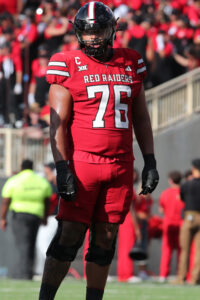 Porter joined Stokes as starters during the Raiders’ offseason program. A third-round rookie and an injury-prone free agent signing serving as such represents a risk, even as Carroll has developed second- and third-day CBs (Sherman, Woolen, D.J. Reed, Byron Maxwell, Shaquill Griffin) regularly. Porter spent six years at Iowa State and will turn 25 just after Week 18. That calls Porter’s long-term outlook into question, though he is still fairly new to cornerback. He transitioned from wideout to corner before the 2022 season and only carried seven starts on his Cyclones resume.
Porter joined Stokes as starters during the Raiders’ offseason program. A third-round rookie and an injury-prone free agent signing serving as such represents a risk, even as Carroll has developed second- and third-day CBs (Sherman, Woolen, D.J. Reed, Byron Maxwell, Shaquill Griffin) regularly. Porter spent six years at Iowa State and will turn 25 just after Week 18. That calls Porter’s long-term outlook into question, though he is still fairly new to cornerback. He transitioned from wideout to corner before the 2022 season and only carried seven starts on his Cyclones resume.
The third-round O-line moves, after multiple second-round trade-downs, are interesting since they came a year after Powers-Johnson (Round 2) and Glaze (Round 3) arrived. Even as Glaze and Powers-Johnson are expected to start, it is important to note how both were drafted by a one-and-done regime. Rogers and Grant coming in under this one should give them upward mobility. Grant coming from the Division I-FCS level makes him more of a long-term play compared to Rogers, and the William & Mary prospect’s status will be worth monitoring as Kolton Miller enters a contract year with an uncertain future.
Other:
 Mayer has now come up in trades at multiple junctures. The Raiders were believed to be dangling the McDaniels/Ziegler draftee before free agency. No trade commenced, and the team now envisions a bigger role for a player who went through a lost second season. The former No. 35 overall pick spent time on the reserve/NFI list last season, totaling just 156 receiving yards in 11 games. Two-tight end sets appear in store alongside Bowers this season, as the Dolphins — a team tied to Mayer — have since agreed to acquire his predecessor (Darren Waller) in a trade to replace Jonnu Smith.
Mayer has now come up in trades at multiple junctures. The Raiders were believed to be dangling the McDaniels/Ziegler draftee before free agency. No trade commenced, and the team now envisions a bigger role for a player who went through a lost second season. The former No. 35 overall pick spent time on the reserve/NFI list last season, totaling just 156 receiving yards in 11 games. Two-tight end sets appear in store alongside Bowers this season, as the Dolphins — a team tied to Mayer — have since agreed to acquire his predecessor (Darren Waller) in a trade to replace Jonnu Smith.
Nothing positive has emerged re: Wilkins this offseason. The Jones fracture he suffered in Week 5 last season still has him on the mend, with a walking-boot photo surfacing recently. Carroll called Wilkins’ rehab difficult, and a reserve/PUP list stay appears squarely on the radar. This would be a blow to a Raiders team that made Wilkins the NFL’s second-highest-paid D-tackle — in AAV and guarantees — last year.
Outside of a strong contract year, Wilkins’ resume does not warrant such status. But Dolphins cap issues last year and Chris Jones being taken off the market at the 11th hour opened the door for a Wilkins windfall. The foot injury threatens to make Wilkins another D-line miss for Las Vegas.
Top 10 cap charges for 2025:
- Geno Smith, QB: $40MM
- Maxx Crosby, OLB: $38.15MM
- Christian Wilkins, DT: $18.14MM
- Kolton Miller, LT: $15.68MM
- Jakobi Meyers, WR: $14.96MM
- Malcolm Koonce, OLB: $10MM
- Tyree Wilson, OLB: $6.82MM
- Jeremy Chinn, S: $6.63MM
- Ashton Jeanty, RB: $6.53MM
- Daniel Carlson, K: $5.15MM
Davis is the common denominator here, and his ownership tenure (since 2011) has included 10 HCs, seven GMs/de facto GMs and two one-and-done playoff journeys. The Raiders are in dire need of a stabilizing force. As Davis has Brady installed as his coveted ownership-tier football-side czar to steer a turnaround, Carroll becomes the team’s bet on restoring order after endless instability. This latest reboot comes as the Broncos and Chargers made strides in 2024, while the Chiefs have an unprecedented five conference championships in six seasons.
Carroll’s Vegas trek gives the AFC West historic coaching muscle, as five Super Bowl rings and 10 appearances (six belonging to Andy Reid) are on the current leaders’ respective resumes. Carroll’s age will undoubtedly make this a short tenure, but the Raiders are counting on he and Smith to at least make the team a competitive operation before longer-term replacements are tabbed.
 Pierce and Telesco did not see eye to eye at quarterback; an eventful (for the wrong reasons) season transpired. Pierce was closely linked to preferring a blockbuster trade-up to reunite with Jayden Daniels, but Telesco was believed to be unready to part with the draft capital that would have been necessary to make that happen. Both power brokers paid the price, and while the Raiders were likely the one team that made the Commanders an offer for No. 2 overall, it never sounded like Washington would have made that trade.
Pierce and Telesco did not see eye to eye at quarterback; an eventful (for the wrong reasons) season transpired. Pierce was closely linked to preferring a blockbuster trade-up to reunite with Jayden Daniels, but Telesco was believed to be unready to part with the draft capital that would have been necessary to make that happen. Both power brokers paid the price, and while the Raiders were likely the one team that made the Commanders an offer for No. 2 overall, it never sounded like Washington would have made that trade. Connections to Bill Belichick and Deion Sanders emerged, but no real traction came regarding either college coach. Mike Vrabel also turned down a meeting with his former Patriots teammate due to being set on returning to New England. These were not the most notable “what if?” regarding this Raiders coaching search.
Connections to Bill Belichick and Deion Sanders emerged, but no real traction came regarding either college coach. Mike Vrabel also turned down a meeting with his former Patriots teammate due to being set on returning to New England. These were not the most notable “what if?” regarding this Raiders coaching search. Few coaches receive fourth chances, separating Carroll from most of his peers. His four AFC East seasons notwithstanding, the veteran leader will obviously be best remembered for his Seattle stay. The ex-USC national champion HC held final personnel say with the Seahawks, and while John Schneider has seen more credit for the team’s draft finds (Kam Chancellor, Richard Sherman, Bobby Wagner, Russell Wilson), Carroll held the hammer.
Few coaches receive fourth chances, separating Carroll from most of his peers. His four AFC East seasons notwithstanding, the veteran leader will obviously be best remembered for his Seattle stay. The ex-USC national champion HC held final personnel say with the Seahawks, and while John Schneider has seen more credit for the team’s draft finds (Kam Chancellor, Richard Sherman, Bobby Wagner, Russell Wilson), Carroll held the hammer. Marv Levy and George Halas were both 72 when they coached their final seasons; Romeo Crennel was an interim Texans HC at 73. This season, Carroll will be two years older than any other full-time HC in NFL history. That invites obvious questions about the Raiders’ plan, as it features a shorter coaching contract (three years) compared to standard deals. Kelly and Graham would make unusual successors, and it is fair to wonder if the Raiders have Carroll’s replacement on staff. A rumor indicating Brennan Carroll could be in that mix certainly proved interesting. How the Raiders plan to transition after this short-term Pete Carroll run will be a central storyline for as long as this partnership lasts.
Marv Levy and George Halas were both 72 when they coached their final seasons; Romeo Crennel was an interim Texans HC at 73. This season, Carroll will be two years older than any other full-time HC in NFL history. That invites obvious questions about the Raiders’ plan, as it features a shorter coaching contract (three years) compared to standard deals. Kelly and Graham would make unusual successors, and it is fair to wonder if the Raiders have Carroll’s replacement on staff. A rumor indicating Brennan Carroll could be in that mix certainly proved interesting. How the Raiders plan to transition after this short-term Pete Carroll run will be a central storyline for as long as this partnership lasts. Carroll does not hold full personnel control in Vegas; it is unclear who is making the final calls. Brady has described himself as a sounding board — a good nominee for undersell of the year — while Carroll has said he, Spytek and Brady are involved in the decision-making.
Carroll does not hold full personnel control in Vegas; it is unclear who is making the final calls. Brady has described himself as a sounding board — a good nominee for undersell of the year — while Carroll has said he, Spytek and Brady are involved in the decision-making. Graham, 46, has been on the HC carousel for a bit. This year did not produce as much attention, even with the Jaguars having Graham as an option behind top choice Liam Coen. The Jags and Bengals, though, did consider Graham for DC. This came after a Graham-led bounce-back gave the Raiders their first top-16 scoring defense (ninth) since the Super Bowl XXXVII year.
Graham, 46, has been on the HC carousel for a bit. This year did not produce as much attention, even with the Jaguars having Graham as an option behind top choice Liam Coen. The Jags and Bengals, though, did consider Graham for DC. This came after a Graham-led bounce-back gave the Raiders their first top-16 scoring defense (ninth) since the Super Bowl XXXVII year. As it turned out, Brady did not want the Raiders to bring in Darnold. But they joined the Giants in making a strong push for Matthew Stafford. Both teams had agreed to provide the aging signal-caller with a sizable guarantee package — from $90-$100MM. (The Raiders, however, were not going to trade their No. 6 overall pick even as the Rams sought a first-rounder for their centerpiece player.) Brady and Stafford met at a ski resort in Montana, after the Rams had given their starter permission to discuss trades, as Davis’ new ownership weapon appeared to give the team a boost in QB recruitment.
As it turned out, Brady did not want the Raiders to bring in Darnold. But they joined the Giants in making a strong push for Matthew Stafford. Both teams had agreed to provide the aging signal-caller with a sizable guarantee package — from $90-$100MM. (The Raiders, however, were not going to trade their No. 6 overall pick even as the Rams sought a first-rounder for their centerpiece player.) Brady and Stafford met at a ski resort in Montana, after the Rams had given their starter permission to discuss trades, as Davis’ new ownership weapon appeared to give the team a boost in QB recruitment. Smith’s stunning turnaround captured attention and brought a substantial raise. But the Seahawks paused on committing true franchise money to their Wilson replacement. That pattern persisting in 2024 and into this offseason opened the door for the Raiders, who obtained Smith for a modest trade price.
Smith’s stunning turnaround captured attention and brought a substantial raise. But the Seahawks paused on committing true franchise money to their Wilson replacement. That pattern persisting in 2024 and into this offseason opened the door for the Raiders, who obtained Smith for a modest trade price.












